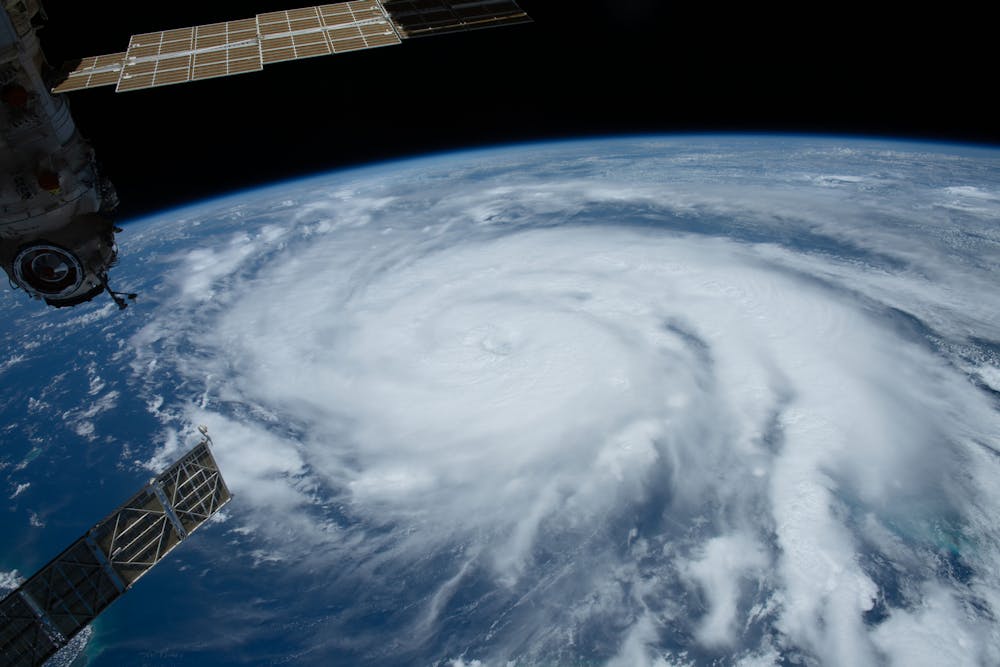Hurricane relief has been a pressing topic ever since Hurricane Katrina blew through the city of New Orleans toward the end of August 2005. Since then, the extent of hurricane damage has grown milder, but the effects of Hurricane Ida this past August devastated the country again.
On almost the exact day that marked Katrina’s 16th anniversary, Ida resulted in damages that reached an estimated total of $95 billion and a casualty count of 82.
Mitigating the cost that natural disasters bring is a complex, multilayered process that starts with research and culminates in damage control measures. It involves fluid coordination between many parties and their continual ability to adjust to the ever-changing, dynamic nature of the overall situation.
Gonzalo Pita, associate scientist and director of the master’s program in Systems Engineering, is working on it. He studies natural disaster risk modeling, specifically to help mitigate the damage caused by hurricanes, seismic events and floods. He also researches the use of disaster risk modeling in policy from 1950 to 2000.
In addition, Pita is a senior consultant at World Bank, where he conducts studies in natural hazards risk assessment and mitigation, design and implementation of asset management systems, and natural disaster mitigation policy.
Risk modeling combines historical disaster information with current demographic, building (age, type and usage), scientific and financial data in order to determine the potential cost of a catastrophe.
Pita explained his work in an interview with The News-Letter.
“I approach my research from the perspective of studying the overlap of three elements: First is the storm,” he said. “The second is the sociotechnical or socioeconomic systems, namely cities, counties, state, the whole country, so there you have infrastructure — buildings, houses, roads, highway, bridges... and the third part would be that everything comes with a cost.”
Pita also elaborated on the value of infrastructure and the exorbitant costs hurricanes may cause.
“If you overlap the storm and the ‘inventory’ of buildings or infrastructure assets, then we’re interested in computing the damage. The physical to the buildings, to the infrastructure... to the interior, what’s inside,” Pita said. “It’s important if you’re talking, for instance, about a hospital. What’s inside the hospital is very important, probably much more expensive than the shell of the [actual] building,” Pita said.
Several other factors come into play, such as the projected strength of the storm, historical data and statistics, socioeconomic capacity and the rate of city development in high-risk locations, and it is admittedly an imperfect process.
Still, risk models are essential in helping the nation make some of its most important decisions, such as constructing levees in New Orleans, where after Hurricane Katrina, the federal and state government invested a total of around $14 billion to help prevent future flooding.
“If there is any good thing about hurricanes, it’s that you know in advance and maybe you have time to prepare,” Pita said. “Let’s say a week or days.”
Because of this, measures can be implemented to brace for a storm before its impact. These measures include alarm systems (like evacuation warnings issued by local emergency authorities based upon information received from the National Hurricane Center and other federal agencies), metal shutters on homes and policies like building codes, with wind standards that engineers must adhere to.
Technology is a strong component in augmenting these tools, which is where things like systems and software engineering have tremendous value.
The tension that exists between societal development and nature creates an endless array of variables that constantly shift according to the interaction of several overlapping layers. The process of risk modeling for natural disasters is complex and dynamic, requiring a vast coordinated effort amongst several different parties.





